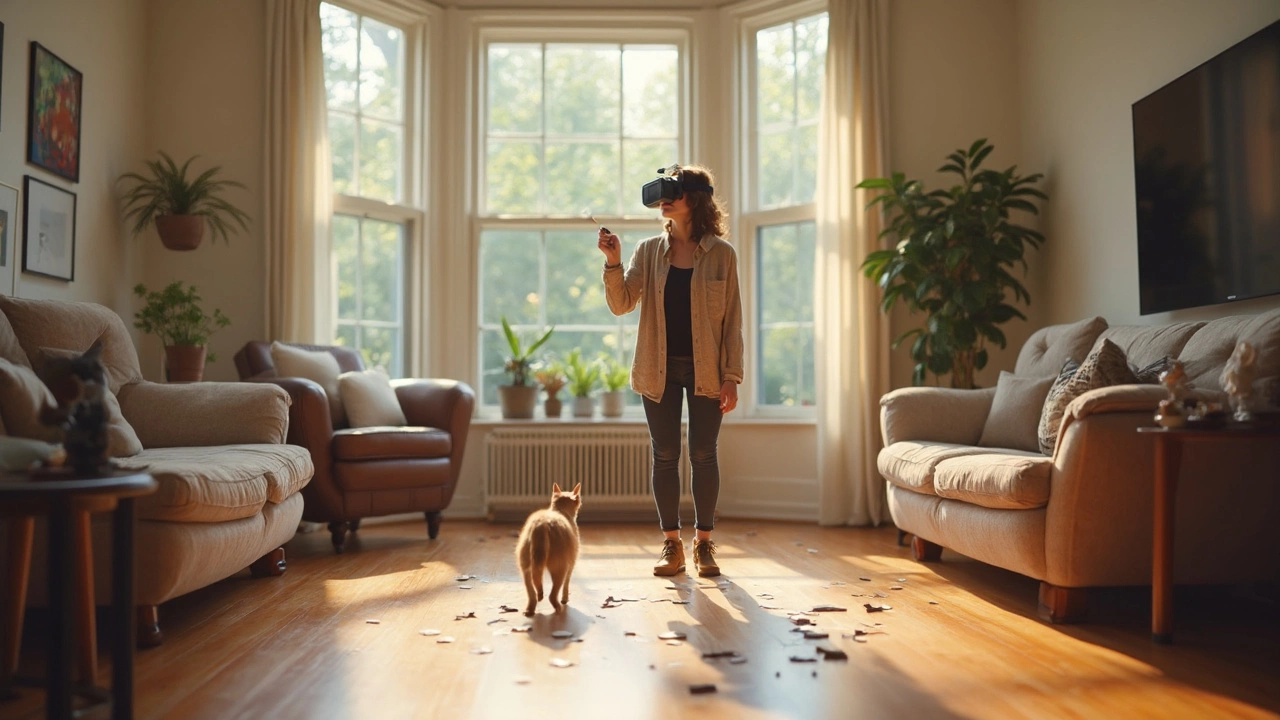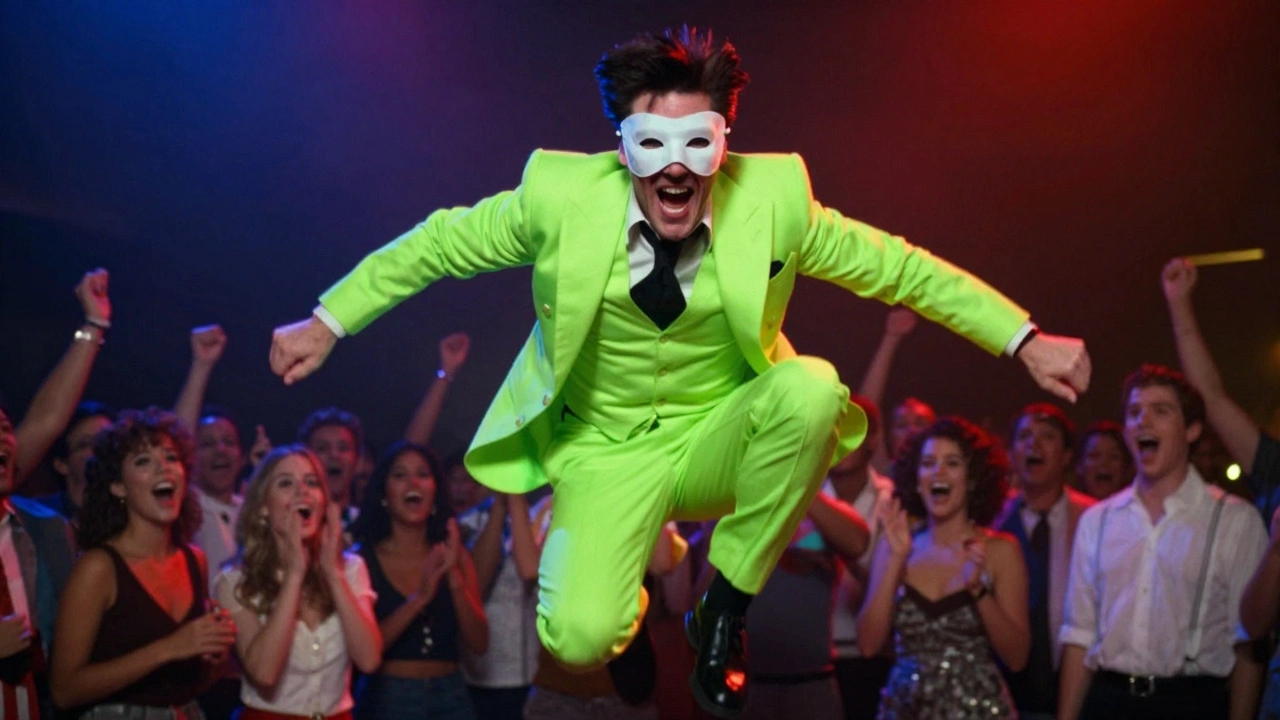Can You Really Walk Around in Virtual Reality? Movement Explained

Imagine stepping into a new world and just strolling wherever you please. It sounds futuristic, maybe a little like science fiction, but with virtual reality, everyone wants to know: can you really walk around like you do in real life? Tech companies are pouring billions into making it possible, but the answer isn’t as simple as “yes” or “no.” There are quirky limitations, surprising workarounds, and a few wild gadgets popping up in the scene. The experience is closer than ever, but it’s rarely as seamless as your own two feet on the ground. There are trade-offs: you get the thrill of movement, but sometimes controllers and cables become new obstacles. Yet, that hasn’t stopped the dream. How close are we to the kind of VR where you can actually get lost somewhere other than your living room? Let's sort out the reality from the hype.
How Does Movement Work in Virtual Reality?
Virtual reality headsets are magic portals, but they come with physical boundaries. Most popular VR headsets like the Meta Quest 3 or Valve Index use a combination of cameras, sensors, and controllers to track what you do with your head, hands, and sometimes, your whole body. You can look left, right, up, and down. You can wave, grab, and poke. But what about walking? That's where things get interesting.
Most VR setups create what's called a 'play area.' Think of it as a digital fence that echoes the real boundaries of your room. The cameras or base stations scan your position and warn you before you bump into tables or, worse, walls. Some headsets let you map out your play area using a laser pointer or just your controller. The Oculus Quest's Guardian system, for example, creates a virtual grid at the edge of your space and flashes red if you cross it. So, you can physically walk around—until your foot meets the edge of the play area.
The size of your play area depends on your room. If you’ve got an open basement or a large living room, you could set up a 15’ by 15’ space for wandering. Most folks, though, are stuck in smaller spaces. A recent survey by Road to VR showed the average home VR play area is just about 2 meters by 2 meters. That’s roughly the size of a queen bed. Not quite the open field you see in game trailers.
So what happens when you want to explore beyond that? That’s when VR worlds switch to other types of movement—like teleporting, artificial walking, or using controllers to slide and turn your viewpoint. Some call it 'thumbstick locomotion.' It lets you roam huge fantasy landscapes, but your real-life legs aren’t doing the work. That’s both good and bad: you won’t bump into your houseplants, but your brain might get confused and leave your stomach feeling woozy. Yep, motion sickness is a real thing in VR.
Here's where things get really wild: a handful of cutting-edge companies are trying to invent new ways for you to walk in place—without actually crossing physical ground. VR treadmills (think: Virtuix Omni or Kat Walk C2) let your feet slide over a low-friction surface, tracked by sensors. They’re bulky, loud, and expensive—think thousands of dollars. But for arcades and hardcore gamers, they’re a ticket for real physical movement in digital worlds. Is the feeling perfect? Not yet. But it's getting there.
It turns out the limits for movement in VR are as much about your space and your wallet as the technology itself. If you really want freedom, you might find yourself rearranging your living room. Or, if you’re like most of us, settling for walking in small circles until someone figures out how to bring those sci-fi infinite hallways into real life.
All About Tracking and Boundaries: Why Can't You Walk Forever?
The million-dollar question is why there isn’t just a “walk wherever you want” mode in VR. It all comes down to tracking and boundaries. To keep your digital world in sync with the real world, VR headsets use external cameras, lasers, or inside-out tracking—meaning the headset's own cameras scan your surroundings. This lets the system know where your body is at all times, but only within that mapped play space.
Boundaries are drawn for safety. No one wants their first VR trip to end with a smashed TV screen. With systems like Meta's Guardian or SteamVR's Chaperone, you'll see visual barriers—basically a digital cage. Some headsets have pass-through mode: the cameras show you your actual surroundings if you get too close to danger. But once you hit the edge of your mapped area, the experience hits a wall, literally and virtually.
Let’s talk about outside tracking versus inside-out tracking. In the old days (think 2016), headsets like the original Oculus Rift required external cameras set up around the room. Clunky, but accurate. Newer models (Quest 3, Pico 4) use cameras built into the headset—no wires, easier setup, but sometimes less precise if you move too fast or get too close to the dark.
So, what stops you from running down your street in VR? A lot. Wireless headsets offer freedom from cables, but they're only as good as the space around you. Plus, safety is a thing: you wouldn’t want to trip over your dog while battling aliens. Developers and hardware makers have to balance immersion and practicality.
Here’s a cool workaround: 'redirected walking.' In research labs, developers tweak the virtual scenery just enough to trick your brain into thinking you’re walking in a straight line—when you’re actually circling your living room. Disney Research published a mind-bending study where users walked physical circles while thinking they were going straight. It’s not ready for prime time, but it’s coming.
When it comes to actual movement, fitness apps like Supernatural and Beat Saber are genius at making you move without having you travel far. They mix things up with side-stepping, ducking, reaching, and fast reactions. No risk of stepping through a window, but you might break a sweat. According to Oculus stats, the average Supernatural user burns about 7-10 calories per minute. So VR movement isn’t just a trick—it’s a legit home workout.
Kids and pets are another wild card. If you’ve got either at home, movement in VR means always pausing to check that you haven’t accidentally punted a plushie or stepped on a Lego. Pro tip: Use a rug or yoga mat to help your feet sense when you’re nearing the edge, even before the system warns you.

The Gear That Unlocks More Freedom
The right hardware can unlock new ways to explore in VR—or just make the basics safer. First, let’s talk about harnesses. For commercial VR arcades, players often wear a harness attached to a support arm. This keeps you from falling if you lose balance, but it's overkill for most home users (unless you have especially wild dance moves).
Then there’s the VR walking treadmill. This is a circular plate that you harness yourself into, often with slick shoes. The sensors track your steps, mimicking real walking in the digital world. The Virtuix Omni recently shipped its Omni One for home users, but it’s not cheap—a price tag around $2,500. It’s not plug-and-play either: make room in your garage or spare room if you want one.
Not everyone wants to buy huge hardware. Some companies are ditching treadmills and exploring wearable trackers. Mocopi from Sony is a stick-on set of motion sensors that lets your real world movement transfer even outside VR's usual 'play area.' These are handy for full-body avatars—especially if you’re into social VR like VRChat, where people show off dance moves or karate skills.
Wireless headsets like Quest 3 and Pico 4 keep getting lighter and more powerful. Less cable clutter means fewer trip hazards. Battery life is up to 2-3 hours per charge—usually long enough for a good gaming session.
There are always creative tips to boost your experience. Setting up your play area in a wide-open room lets you maximize real movement. Move furniture out of the way. Add a soft rug to help your feet sense boundaries. If you want extra safety, try using wrist or ankle weights—they give you real resistance and turn VR walking into exercise. Some avid users use wall-mounted fans pointing at a gentle breeze; you won’t forget you’re still in the real world, and the cool air helps fight VR nausea.
Voice commands are getting better too. Instead of using fiddly controllers to move, you can say “move forward” or “turn left” in supported games. Combine voice controls with head tracking, and suddenly movement feels way more natural. Meta is rolling out voice movement options in updates for Quest headsets this year.
Below, here’s a look at some of the common methods for VR movement and how much 'real' walking they allow:
| VR Movement Method | Physical Walking? | Common Devices | Notes |
|---|---|---|---|
| Room-Scale Walking | Yes, within play area | Quest 3, Valve Index | Limited by room size |
| Thumbstick/Controller Walk | No | All VR headsets | Often causes motion sickness |
| Teleportation | No | All VR headsets | Reduces sickness, not immersive |
| VR Treadmill | Yes (stationary) | Virtuix Omni, Kat Walk | Bulky, expensive |
| Redirected Walking | Yes, mostly | Experimental, arcades | Not widely available |
Whatever your budget or living situation, there’s a way to get moving in VR. From thumbsticks to treadmills to clever headsets, you can push the boundaries—or at least feel like you’re roaming new worlds, even if your cat’s watching from the couch.
Tips, Tricks, and the Weird Future of VR Walking
If you really want to maximize your movement in VR, there are a few tricks that’ll keep you safer—and make it more fun. First up: have a ‘VR buddy’ the first few times you try active games. Not only can they keep you from bumping into stuff, but they’ll probably get a good laugh too.
Always spend a few minutes mapping out your room before putting on the headset. Move chairs, cables, and coffee tables well out of the way. Mark the play area not just with the headset’s system, but also a real-world mat, rug, or even painter’s tape on the floor. That tactile feedback helps your feet sense you’re reaching the edge, especially when you’re deep in the action.
Use hand straps for your controllers—even if you trust yourself. Dropped controllers are the number one way people break TVs and expensive electronics. If your headset comes with a pass-through camera, get used to double-tapping the side to peek out. It takes half a second and could save you from stepping on something painful (like LEGO bricks or worse, your pet’s tail).
Keep the play sessions brief if you’re prone to VR motion sickness. Your brain sometimes panics when your eyes think you’re moving but your inner ear disagrees. Take breaks every 15 or 20 minutes, especially with games that simulate smooth walking. Drinking cold water and using a fan can help fight off nausea. If you’re getting into fitness games, pace yourself. As fun as it is to lose yourself in virtual dances or boxing, it’s real exercise—pace matters.
For those who really want to up their VR walking skills, here are some next-level hacks:
- Look for games and apps rated for 'room-scale' play—these are designed for real physical movement and encourage you to walk, dodge, and lean.
- Install a mirror in your play space. Sometimes just a quick glance (when you lift your headset) keeps you spatially aware.
- Upgrade to a wireless VR headset if you can. Cables are the biggest trip hazard, hands down.
- Play during daylight with curtains closed; sunlight can confuse headset positioning cameras but darkness makes inside-out tracking struggle, too.
- If you play social VR games, use a full-body tracker setup for the most freedom—just be ready for the learning curve.
- Adjust floor height calibration before each session. If your avatar’s feet aren’t lined up with the virtual floor, you’ll feel weird walking and it can make you clumsier than usual.
- Try out experimental movement methods in indie games. Developers are always testing new tricks to give you that real-walking feel without the nausea.
The flurry of patents and prototypes rolling out in 2025 shows where things are headed. Sony just invested in shoes that vibrate and adjust resistance to trick your feet into thinking you’re walking uphill or over gravel. Apple is rumored to pair their Vision Pro with a 'spatial navigation orb' you can roll underfoot for 360-degree movement—like a giant trackball for your toes.
None of this means VR walking works perfectly everywhere yet. The technology is breaking new ground every few months, but we’re still some way off from that Black Mirror future where you wander endless landscapes with just a headset and your own two legs. The dream is alive and kicking, though—and in the meantime, your living room might just become your favorite place to get lost (and, hopefully, not stub a toe).





